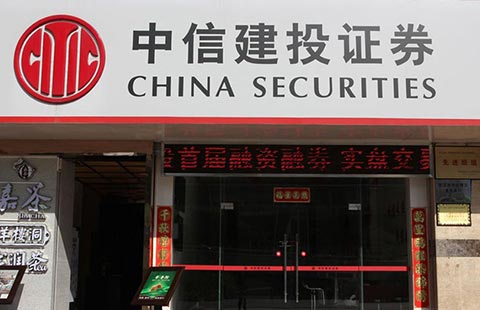
China, long a favored destination for inward investment, may soon see the position reversed
Chinese companies are outbound and seemingly on a mission. Despite public perceptions to the contrary, State-owned and private enterprises from the world's second-largest economy have not until now been buying up everything that moves around the world.
But this is beginning to change. China's outbound direct investment (ODI) increased by 16.8 percent to $90.17 billion last year, according to the Ministry of Commerce.
And, according to ministry spokeman Shen Danyang, it could outstrip foreign direct investment (FDI) into China even as early as this year but certainly within two years. The gap last year was $27.42 billion with FDI rising over the year just 5.25 percent to $117.59 billion in 2013.
Some commentators have likened China, already the world's third-largest investor, to Japan in the late 1980s, where companies then went out on an asset spending spree.
Only this week it was announced that Dongfeng Motor Group Co, China's second-largest automaker, was buying a stake in loss making French automaker PSA Peugeot Citroen for 800 million euros ($1.1 billion).
This follows another high profile deal last month when computer giant Lenovo Group Ltd announced it was buying Google Inc's Motorola handset division last week for $2.91 billion, although the US company in return will be taking a 5.94 percent stake in the Chinese private company.
In Europe Bright Food (Group) Co Ltd paid $1.2 billion for a 60 percent stake in UK cereal maker Weetabix Ltd last year hoping to make its products popular in the Chinese market.
China Investment Corp (CIC), the country's sovereign wealth fund, has also been involved in the action. It took a 10 percent stake in Heathrow Airport Holdings, which owns Heathrow and Stansted as well as regional UK airports, in 2012.
This was the same year it took an 8.8 percent stake in Thames Water Utilities Ltd, which supplies London's water.
Recent deals suggest there is a fundamental change in the nature of ODI.
Throughout the last decade much of it was focused on acquiring resources businesses in Africa, Latin America and Australia.
And while such deals have continued such as with China National Offshore Oil Corp's $1.4 billion for a 33 percent stake in oil exploration interests off the shore of Lake Albert in Uganda, last year the direction of travel was not as great.
China's resources ODI investments increased just 7.7 percent in the first nine months of last year to $23.7 billion, compared with $22 billion in the same period of 2012, according to A Capital, the China-based investment fund.
ODI investment in industry and services — many of the targets located in Europe and the United States – increased by 46 percent from $12.6 billion in the first three quarters of 2012 to $17.9 billion in the equivalent period of 2013.
Andre Loeskrug-Pietri, founder and managing director of A Capital, which has offices in Beijing and Brussels, says this represents a big shift.
"Resources are no longer the big story as far as China's ODI is concerned. Far more interesting is what is happening to industry and services. This is now where China's ODI is targeted," he says.
Loesekrug- Pietri's firm has come up with its own reference indicator, the A Capital Dragon Index, to chart the growth of China's ODI.
Starting at 1,000 in 2001, it had grown to 2,483 in the first nine months of 2013, a near 2.5 times increase.
"What essentially this means is that the China economy is 2.5 times more globalized than it was in just over a decade ago," he says.
"Nominal ODI has actually increased 10 times over the same period but it doesn't mean there is 10 times more activity because China's GDP has quadrupled. This is a very significant increase, however, and shows how international China is becoming."
Johnson Chng, Greater China managing partner for international management consultants A.T. Kearney, believes Chinese ODI is very much on an upward curve.
"We have seen more outbound investment from Chinese companies over the past 18 to 24 months and I think definitely it will continue to pick up pace," he says.
"We also have seen this change in pattern from the more politically motivated and largely State-owned enterprise resources type investment to more commercial investment not just by private enterprises but by State-owned ones too."
Chng says the Chinese companies also have a clear geographical focus of what sort of targets they will find in which geographical locations.
"They look at Germany for high precision engineering, France and Italy for high fashion luxury goods targets and to the US for high-tech companies. They are very clear in their minds where to look for what and for what purpose," he says.
Paul M Cheng, chairman of Hong Kong-based private equity concern China High Growth (CHG) and a former member of the Hong Kong Legislative Council, says Chinese companies are taking advantage of the fact that valuations in Europe and the United States are now cheap as a result of the financial crisis.
"I expect to see a lot more investments over the next five to 10 years. It is an opportunity for Chinese companies to acquire technology instead of relying on their own home-cooking research and development," he says.
"They can also acquire consumer brands. Very few Chinese companies have global brands and even their names are a no-go as far as Western consumers are concerned."
The Government set the target of equalizing ODI and FDI within the current Five-Year Plan (2011-15).
However, whether ODI is bigger than FDI or the other way round has no real macroeconomic significance.
If there was a major imbalance between the two, there could be issues for capital inflows and outflows that could be destabilizing.
ODI does, however, provide an alternative for China to pare down its foreign currency reserves, which hit a record $3.82 trillion in January, without the usual recourse to buying US Treasury bonds, which typically does not generate very high returns.
Klaus Meyer, professor of strategy and international business at the China Europe International Business School (CEIBS), says the equalization target itself has little real relevance.
"I think it is largely of symbolic value reflecting that China is now an outward player and not an inward player. The government likes to set symbolic targets to motivate people to work harder. It catalyzes effort and gets people moving," he says.
He says there could be scenarios when increased ODI would be adverse for the China economy.
"The worst case scenario is that some companies take their money out of the country as in capital flight, which would not be good for China. There is a not-insignificant part of Chinese overseas investment that goes to places such as the Bahamas and British Virgins Islands, although some of that comes back."
Pelham Smithers, managing director and founder of Pelham Smithers Associates, says it is important to be careful when comparing China's current ODI efforts with the heady days of Japan investment in the 1980s. The London-based research firm focuses on technology issues,
"It does strike me that compared with Japan in the 1980s, China is still surprisingly reticent. I think partly the reason for this was that Japan developed a bad relationship with Washington 25 years ago and there is sense that this could happen very quickly with China if they were to step up activity."
He says those who think that Lenovo buying IBM Corp's low-end server business for $2.3 billion in January is a trend forget that the purchase of the US company's PC business took place almost nine years ago.
"To say this is a trend in Lenovo's case is questionable given that they were such an early mover on this. The clue to the significance of this deal is in the term low-end. The US will remain very protective of the high-end technology that China purportedly requires."
The cumulative stock of Chinese investment in Africa has risen from just $500 million to $22.9 billion in 2012, according to The China Analyst produced by Beijing Axis, the international advisory and procurement firm.








